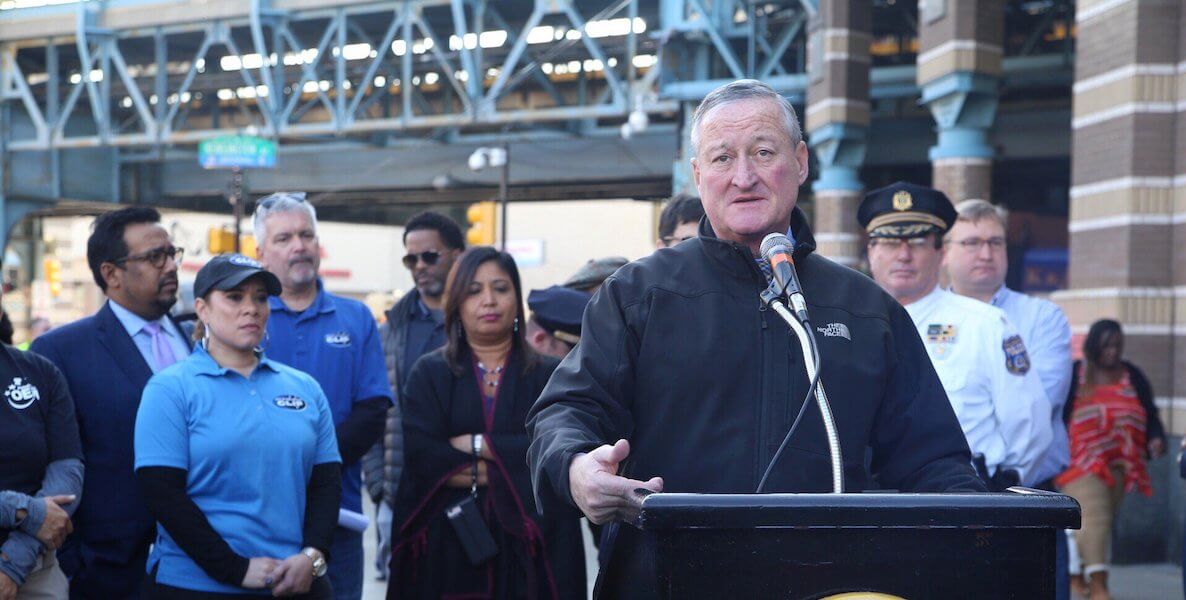Several years ago, I was part of Mayor Kenney’s efforts to combat what I coined in the City’s messaging as “America’s nationwide opioid crisis.” As a member of the communications team for both the Mayor’s Office and Office of Homeless Services, I worked at conveying to the public how opioid addiction was impacting Kensington. Some days, I had to accept blame for what was the City’s fault — and demand accountability for what wasn’t.
It isn’t City Hall’s fault that the nation has an opioid addiction crisis. But the state of Kensington today is, in fact, City Hall’s fault. And we’ve got to do something about it.
The circus of misery in Kensington became City Hall’s fault when municipal leaders promised the neighborhood and the city overall that we would decisively reverse not only the opioid crisis — but also the decades of racist and classist neglect leading to Kensington’s ignoble designation as a destination for those in search of potent drugs. We called this effort the Philadelphia Resilience Project.
It became City Hall’s responsibility every time leadership produced a progress report with shiny images of clean streets where abandoned cars once served as drug stash spots, every time the mayor held a press conference under the El, and every time we sent out a press release boasting of the number of formerly homeless people still in drug or mental health treatment or still housed and off the street.
It certainly became City Hall’s fault every time it convinced a neighborhood group to trust a municipal government that provided no reason to be trusted, too.
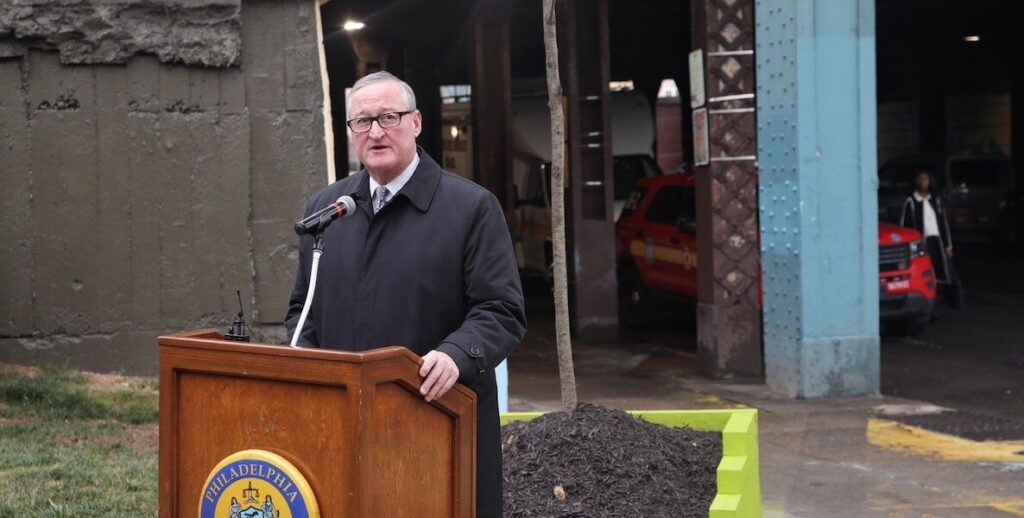
We made progress — once
If you want credit when times are good, then you better be ready to stand to account for things when they’re not so good. And if you want to invest about $50 million — which, if you think about it, is a pathetic investment in a city with a $5 billion operating budget — in America’s poorest big city, you should be able to convey concrete outcome measurements. (To put that $50 million or so in perspective, we could functionally end homelessness in Philadelphia for roughly half that, but City Council chooses not to. Instead, we spent $500,000 of federal funds on a “tiny house village” in the middle of nowhere.)
“At the start of the Resilience Project,” reported Jake Blumgart for WHYY’s PlanPhilly in 2019, “nearly $8 million in new funding was invested … on behavioral health, homeless, and community services. In his [2019] five-year fiscal plan [Mayor Jim] Kenney has called for $36 million in new funding dedicated to the Resilience Project.” Of this, a full $26 million was going directly to the Office of Homeless Services, the department I worked for.
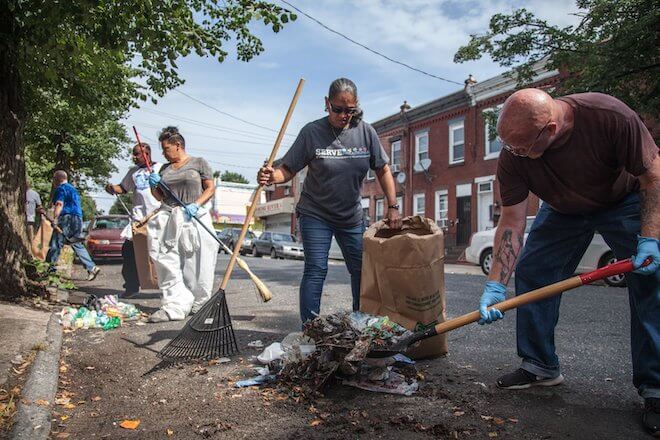
The Resilience Project united more than 35 city agencies and departments with several goals, including reducing encampments, trash, crime, and drug overdoses; increasing medication-assisted treatment among opioid users; and mobilizing community response. Less than a year into its 14-month run, the Resilience Project released a progress report claiming numerous improvements, including: 100 new shelter beds; the removal of 606 abandoned vehicles, 376 tons of trash, and tens of thousands of needles; and, the installation of new lights and cameras along the business corridor.
In America’s poorest big city, you should be able to convey concrete outcome measurements.
A key part of that investment included operationalizing the Encampment Resolution Program, for which I personally developed messaging. The ERP successfully, at the time at least, got rid of four encampments in Kensington, including the notorious train tunnel encampments like on Emerald Street.
According to the City’s report in June 2019: “The current street homeless population is about half what it was in summer 2018.” On the heels of its short-term success, Kenney indeed committed $36 million in his five-year plan to the Resilience Project and extended the executive order through the end of 2019.
This was a game-changing investment in people. It could have actually made a difference. In many ways, it did. Lives were saved. But take one look at Kensington and Allegheny today and tell me how different it is. The encampments are supposedly gone, but new tents and structures appear daily.
The scant information the City has provided showed a distressing 11 percent uptick in the street homeless population in Kensington between Fiscal Year 2021 and 2022. And that’s a conservative number, based on the yearly Point-in-Time Count every January, rather than the more frequent counts done by police and homeless advocates daily or monthly.
The City insists that the ERP was absorbed into standard municipal operations through its “Encampment Resolution Team,” says Sarah Peterson, the Mayor’s communications director, “which has completed numerous resolutions of smaller encampments.”
I’ll take her word for it, but it’s not looking too effective, whatever it is. And even Peterson admits that the last large encampment resolution strategy “was carried out in Kensington in August 2021.” The rest? Well, she says their new approach is much “broader.”
Ah huh.
Trash is again strewn about, as are used syringes today. Neighbors are showing up to community meetings lamenting how their kids can’t walk to school safely – again. And just this week, we’re in The New York Times as it profiles “tranq dope,” which — and this is not exaggeration — withers away flesh as though it were frostbitten alligator skin.
The images are horrifying. Is this progress?
No answers — but lots of excuses
When I first asked the City recently about the status of the ballyhooed Encampment Resolution Program, I was informed that no ERP operations have taken place in over a year, so it was, essentially, not a germane moment to inquire about it — including whether or not the people supposedly housed in the program are still housed today, a key measure of the program’s success.
Eventually, the City turned over some data, going back only as recently as June 2021. The numbers didn’t look too good: Of 237 people inhabiting the first four encampments on the by-name list, only 155 were still housed as of 18 months ago. That’s a 65 percent success rate — way off from the 90 percent success Office of Homeless Services head Liz Hersh told City Council in 2017 they could expect of the types of supportive housing programs that people were being moved into.
Where did everyone go? And what do the figures look like now? Rather than provide the numbers, the City forced me to file a formal Right-to-Know request. I’m still waiting on a response.
The missing people could be in jail, living with family or, tragically, dead. “They may have also returned to the street,” Peterson tells me.
When I asked for figures relating to street homelessness in Kensington, again I was redirected or outright ignored. It’s not the most effective strategy if you have nothing to hide. In fact, I’ve been waiting so long my request has spanned two separate mayoral communications directors.
It’s OK, I’ll wait. This is too important to let it fall by the wayside.
Stonewalling and forcing a Right-to-Know request, only working through the City’s lawyers, when the data is pretty easy to email — and, again, I know this because I used to be one of the program’s spokespeople — is a strange way to talk about the program that once prompted the City to fly in officials from across the country to admire our progress — or fly our own officials out to other cities to boast. I remember working on the slides for those presentations.
We were proud of the work. Then, at least.
The excuse for years now has been Covid. But that can’t be the answer forever. We relaxed masking requirements everywhere a long time ago. Things are so normal, City Council is meeting in person. Streateries are now regulated and require licenses. To-go cups of liquor are only OK during the Mummers Parade again. We have about 6,000 people running for City Council and mayor. In other words, in terms of government everything is back (more or less) to normal.
It’s hard to see the situation in Kensington and not view it as an ongoing emergency.
How much longer are we supposed to blame the pandemic on the City’s inability to follow through on its commitments? Because, that’s what this is. We ran out of rhetorical gas.
The City says it operationalized the Resilience Project into now routine government services and that the special activation was an emergency response only. But it’s hard to see the situation in Kensington and not view it as an ongoing emergency.
And while my former colleagues deserve a tremendous amount of credit for the wins they’ve been able to snatch from the jaws of defeat, accountability for this these failures and the City’s shady approach belongs at the feet of the mayor and his key appointments.
This is a key leadership problem. It has nothing to do with the boots on the ground or those dedicated public servants toiling in the bureaucracy suffering under the weight of ineffectual bosses.
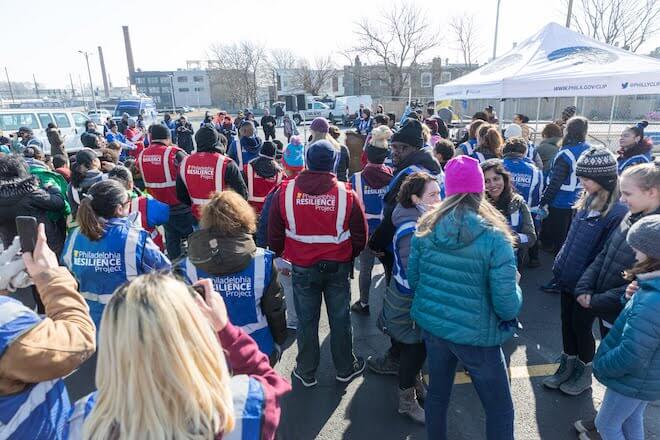
What can we do?
So, what can be done when you have a mayor seemingly uninterested in the work who has himself admitted on record on live television that he can’t wait to be out of office? What do you do when you have a key City office unwilling or unable to demonstrate that it’s actually done anything with the money it has received? What can we possibly do about Kensington?
First, a few points. I have been a daily intravenous drug user. I spent time homeless on Philadelphia’s streets, including sleeping outside the basement entrance to a law firm at 21st and Manning streets and the city’s shelter system. I have experienced hunger.
Moreover, I spent nearly six years working in City Hall including on #ResilientPHL, as it became known. I wasn’t important, to be clear. I was part of a team working across departments. Thousands of people contributed to this project. I was, and am, still extraordinarily proud of the work done and the dedication my colleagues exhibited.
The status quo in Kensington is hardly brotherly love. If anything, it’s enabling.
So, do not mistake me for a callous, indifferent, or unqualified guy just spitballing here. And I’m certainly not one of those “City Hall is awful” types, either. They contribute nothing to the conversation. Rather, my opinion is informed both by firsthand experience as well as professional expertise and knowledge.
The status quo in Kensington is hardly brotherly love. If anything, it’s enabling. And with national newspapers shining a light on the problems there again, it’s obvious that whatever’s been going on has failed. More to the point, there has to be a middle ground between the ineffective criminalization of the 20th century and the libertine permissiveness that we’ve employed as of late. It’s greatly disturbing that we do not even readily have data on this approach’s efficacy any longer, as though it’s totally forgotten as a priority.
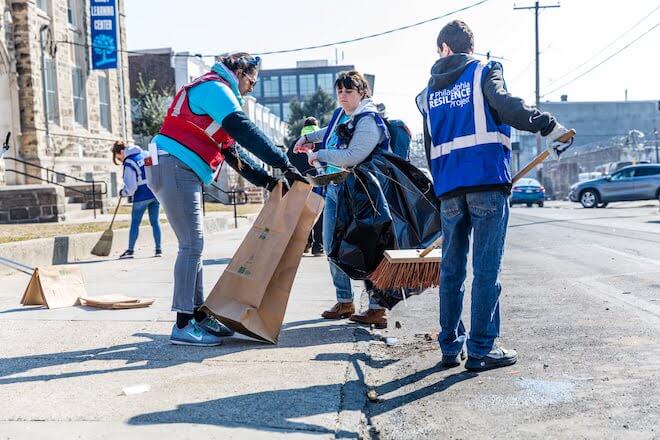
The City should immediately reactivate the emergency orders and specialized response of The Resilience Project. The absorption of these initiatives into City operations seemingly has failed. Mayor Kenney needs to clean house operationally, and at least find new leadership at the Office of Homeless Services, leadership that can be trusted to fulfill on promises made to neighborhood residents instead of simply giving a blank check to those who focus mostly on the drug users and not as much on the neighborhood residents, schools, and students.
Philadelphia needs to think big with the ERP again, if it was truly successful — and if it wasn’t, it needs to be honest about this by publicizing the data and showing whether the people in treatment and housed when those first four encampments shuttered are still housed and not simply back out on the street. And we need to take a very close look at the data, including how the City defines homelessness, who meets that definition, and how accurate or not past claims actually are.
Above all, the City needs to stop treating Kensington like the scenes we saw in The New York Times recently are remotely acceptable. It’s not just a matter of equal protection under the law — after all, how is it OK for government to allow lawless misery in one area of the city but not other areas?
It’s also a matter of common decency and humanity.
The Citizen is one of 20+ news organizations producing Broke in Philly, a collaborative reporting project on solutions to poverty and the city’s push towards economic mobility. Follow the project on Twitter @BrokeInPhilly.
![]() RELATED
RELATED
Photo via The Philadelphia Streets Department Twitter Twitter



